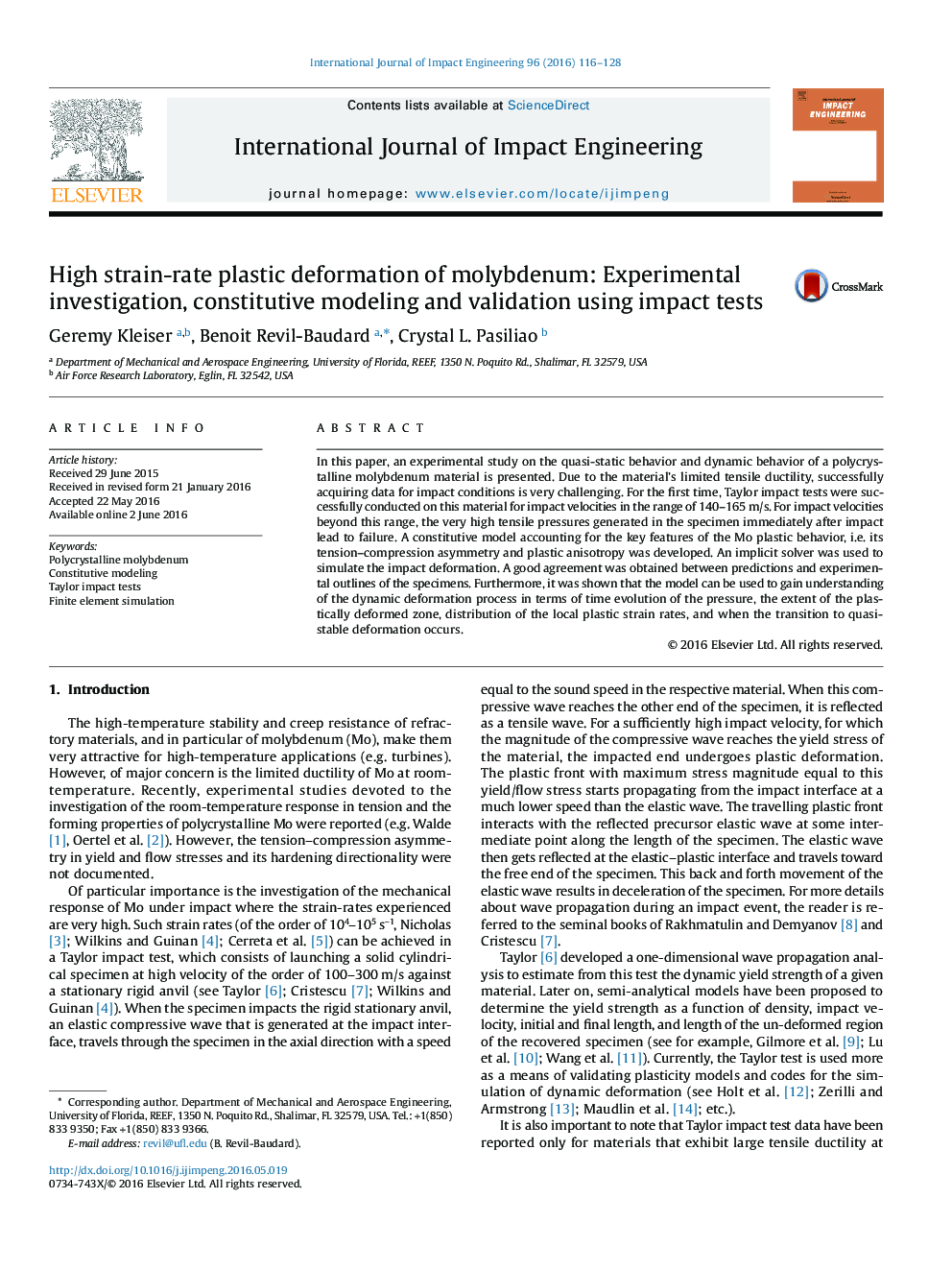| Article ID | Journal | Published Year | Pages | File Type |
|---|---|---|---|---|
| 776244 | International Journal of Impact Engineering | 2016 | 13 Pages |
•Plastic behavior of a polycrystalline molybdenum is characterized for quasi-static and high-rate strain.•Taylor impact tests were successfully conducted on Mo for impact velocities in the range 140–165 m/s.•An elastic/viscoplastic framework using a yield criterion that accounts for the plastic anisotropy and the tension–compression asymmetry.•A good agreement was obtained between predictions and experimental data for the Taylor impact tests.
In this paper, an experimental study on the quasi-static behavior and dynamic behavior of a polycrystalline molybdenum material is presented. Due to the material's limited tensile ductility, successfully acquiring data for impact conditions is very challenging. For the first time, Taylor impact tests were successfully conducted on this material for impact velocities in the range of 140–165 m/s. For impact velocities beyond this range, the very high tensile pressures generated in the specimen immediately after impact lead to failure. A constitutive model accounting for the key features of the Mo plastic behavior, i.e. its tension–compression asymmetry and plastic anisotropy was developed. An implicit solver was used to simulate the impact deformation. A good agreement was obtained between predictions and experimental outlines of the specimens. Furthermore, it was shown that the model can be used to gain understanding of the dynamic deformation process in terms of time evolution of the pressure, the extent of the plastically deformed zone, distribution of the local plastic strain rates, and when the transition to quasi-stable deformation occurs.
